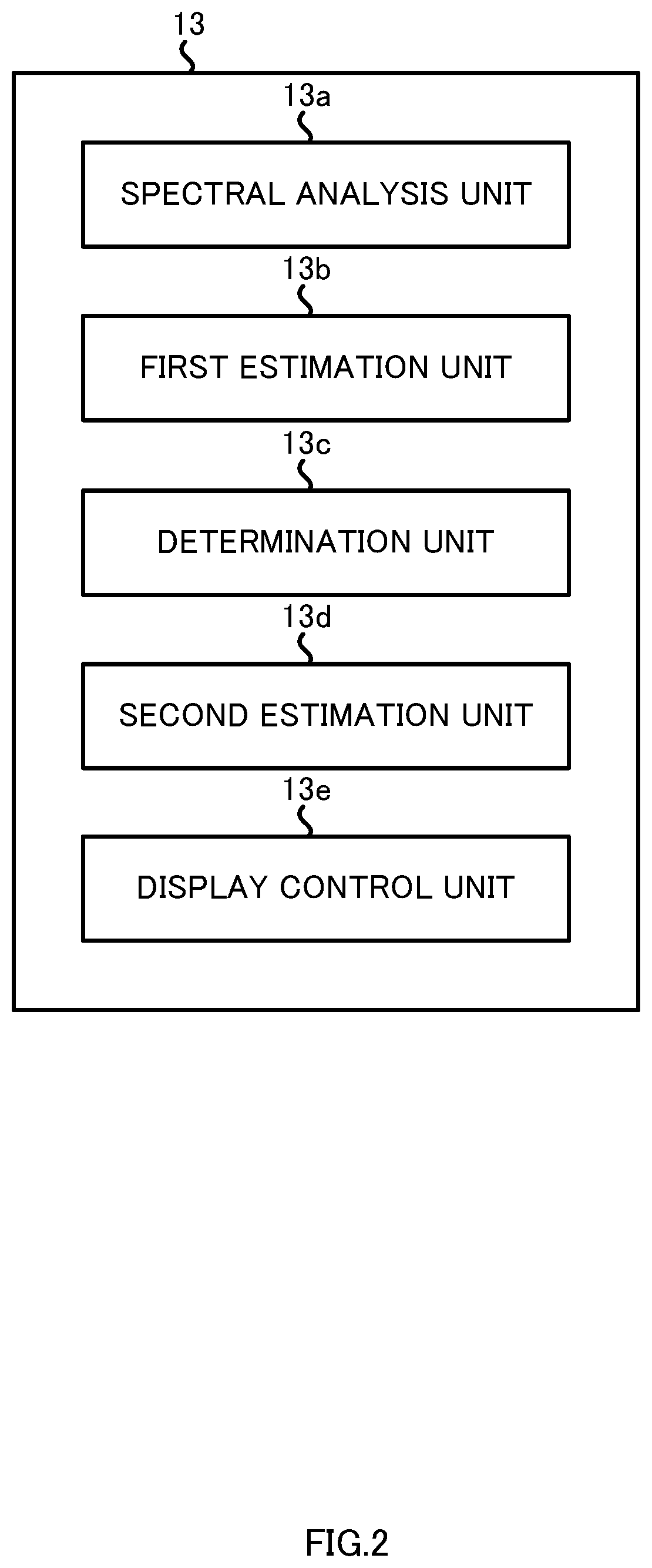Method and device for estimating number of cells
a technology cells, applied in the field of estimating the number of cells, can solve the problems of media contamination and the inability to obtain information about the number of cells only intermittently, and achieve the effect of accurate estimation and accurate estimation
- Summary
- Abstract
- Description
- Claims
- Application Information
AI Technical Summary
Benefits of technology
Problems solved by technology
Method used
Image
Examples
first example
[0035]Here, the following is a first example in which the cellular metabolite concentration is estimated using spectroscopy as a method of obtaining a value corresponding to concentration of the cellular metabolite contained in culture media and using multivariate analysis as the statistical method.
(Estimation of the Number of Cells)
[0036]The number of cells can be estimated by applying the estimated cellular metabolite concentration to the relationship information corresponding to the cellular metabolite.
[0037]On the other hand, in the case of using spectroscopy, the accurate concentration can be estimated only when the cellular metabolite concentration is high.
[0038]Here, cell-consumed substances among the cellular metabolites decrease over time as cells are cultured. On the other hand, cell-produced substances among cellular metabolites increase over time as cells are cultured.
[0039]In other words, the concentration of cell-consumed substances cannot be accurately estimated in th...
second example
[0072]Next, the following is a second example in which the cellular metabolite concentration is estimated, using an electrochemical system to obtain values corresponding to concentrations of the cellular metabolites contained in culture media, and analyzing the correlation between cellular metabolite concentration and the obtained electrical values.
(Estimation of the Number of cells)
[0073]The detailed description thereof is omitted since it is similar to the first example.
(Device for Measuring the Number of Cells)
[0074]Referring to FIG. 4, a device 20 for estimating the number of cells according to the second example is described. The device 20 comprises a memory unit 21, an electrical measurement unit 22, a control unit 23, a display unit 24, and an operation unit 25.
[Memory Unit, Display Unit, and Operation Unit]
[0075]The configurations of the memory unit 21, the display unit 24, and the operation unit 25 are similar to those of the memory unit 11, the display unit 14, and the ope...
examples
[0095]Although the present disclosure will be described in more detail with examples below, it should not be limited to these examples.
[0096]The following is an example in which the relationship between cellular metabolite concentration and the number of cells is obtained using a bioassay, and an example in which the cellular metabolite concentration is estimated using spectroscopy. In an example of the present disclosure, the cells to be cultured are T cells. The culture media were seeded with 5.0×106 T cells. In an example of the present disclosure, the cellular metabolites are glucose, which is a cell-consumed substance, and lactate, which is a cell-produced substance, contained in the culture media. A detailed description will be given below.
(Experimental Conditions and Methods)
[0097]Glucose and lactate were individually reacted with the following reagents, and concentrations were measured through detecting luminescence signals. The number of cells was measured by a known method...
PUM
 Login to View More
Login to View More Abstract
Description
Claims
Application Information
 Login to View More
Login to View More - R&D
- Intellectual Property
- Life Sciences
- Materials
- Tech Scout
- Unparalleled Data Quality
- Higher Quality Content
- 60% Fewer Hallucinations
Browse by: Latest US Patents, China's latest patents, Technical Efficacy Thesaurus, Application Domain, Technology Topic, Popular Technical Reports.
© 2025 PatSnap. All rights reserved.Legal|Privacy policy|Modern Slavery Act Transparency Statement|Sitemap|About US| Contact US: help@patsnap.com



